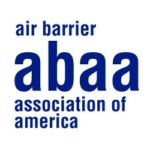Member Spotlight: Adam Ugliuzza, P.E., CPHC
The Air Barrier Association of America (ABAA) dives inside the career of Adam Ugliuzza, Director of Enclosures for Sustainable Building Partners. In this feature interview, learn what made him become an ABAA member, what led him on his career path, and get his perspective on the future of the air barrier industry.

Adam Ugliuzza, P.E., CPHC
Adam brings 16 years of engineering experience focusing on building science and the building enclosure construction industry. Discipline expertise includes building enclosure consulting and commissioning services for new and existing construction, in addition to forensic investigations to determine root cause of building performance issues. He also brings industry leading expertise in large building whole building airtightness testing, which is at the forefront of high-performance building construction. Adam continues to work on projects across the United States and abroad providing professional building enclosure consultation in both the residential and commercial space for all types of construction, ranging from multi-family wood/timber framed buildings to high performance institutional/healthcare facilities to high-rise construction. Through this experience, Adam brings a unique approach to building enclosure consulting and testing, concentrating on enclosure interface coordination in design and construction phases of the project that overlays a holistic approach, critical to achieving high performance building construction; the goal to help ensure all the materials, systems, and assemblies are properly connected to provide continuous environmental control. His extensive testing knowledge allows him to be deliberate and methodical in his approach to interweaving functional testing to verify performance.
Name: Adam Ugliuzza
Title: Director of Enclosures
Firm: Sustainable Building Partners
City: York, PA
ABAA member for 4 years
What was the path to your career — how and why did you pursue a profession as a Building Enclosure Consultant?
A: I started my career as a bridge design engineer and then bridge inspection when the economy slowed during the 2008 recession. After many years in the bridge industry, it was clear to me that I didn’t want to continue to pursue this career path. At that time, my close friend worked at Architectural Testing Inc. (ATI) and suggested I interview with the Building Science group. After meeting with ATI (now Intertek), I knew that I wanted to switch to this new and exciting field. It was a change from bridges to buildings, but quickly came to be a more natural fit for me.
Is there anything that you believe everyone in this industry should be working towards?
A: The industry needs to continue to move towards Passive House (PHIUS) performance targets. This encourages the industry have scientific understanding of both the building enclosure and the relationship with the building mechanical systems.
What role have peers, mentors, or advisors played in your career?
A: Mentors and industry leaders have played a huge role in accelerating my career. I would be years behind if I did not have the access to the technical resources and guidance that I have received.
What led you to become an ABAA member?
A: Intertek has long had a representative on the board from our testing lab; when their term was up, it was a great opportunity to represent Intertek through our building science department. At that time, I had experience in both building enclosure consulting /commissioning and large building, whole building airtightness testing. I thought that I could be a great asset to the association, based on my experience.
Are you involved in any ABAA committees? Do you have any ABAA certifications?
A: I am currently task chair for the Transitions, Terminations and Flashings Task Group and Co-Chair for the Whole Airtightness Testing Task Group.
How long have you been in the industry?
A: 8 years.
What major changes have you seen?
A: The construction industry has a whole appears much more familiar with air barriers and the importance of a properly designed and installed building enclosure. There is still a lot of work to go, but it seems that all parties involved (owners, architects, contractors, etc.) believe that it is very critical to get right the first time, wherein the past it was an after thought.
What traits or skills do you think are necessary to be able to succeed in your industry?
A: Engineering principles are key. Building Sciences incorporates many of the core engineering subjects (material science, fluid and thermo dynamics, structures, and more).
Do you have any advice for anyone starting out in your field?
A: Become a sponge for knowledge and take the initiative to research and learn new topics or subjects on your own. This is a field that is not typically taught in school or college, so textbooks and resources are limited. Knowing the right questions to ask can be the difference in how fast one can excel in this career. Get out and see construction, existing and new; that’s where one can learn the most.
How much demand do you think there is for people in your profession?
A: There is a high demand for building enclosure consultants. Owners, architects and contractors are all looking for help with the building enclosure.
What do you think the industry will look like in five or ten year’s time?
A: Interfacing techniques of building enclosure components will continue to improve with new innovations in materials/products. Thermal bridging is the last frontier for enclosures; we should expect to also see a great deal innovation in this area as the industry strives to achieve “continuous thermal control”.
